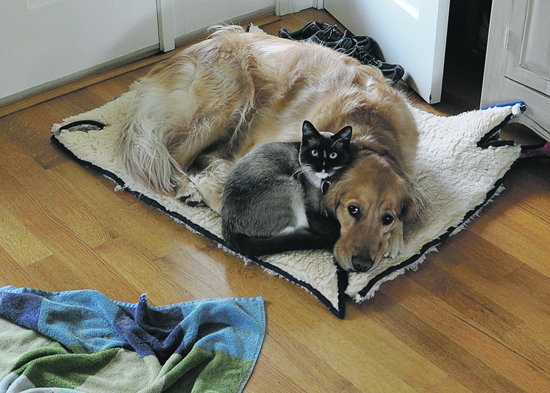
| ||||||
For cats, I still recommend neuter and spay at 4-6 months. There is no reason to wait to neuter a male cat - the exposure to testosterone in an intact male cat will increase the chance of aggression and urine spraying. For female cats, a major detriment to spay is the risk of obesity, although it is unclear whether age at time of spay correlates with fat development. However, the benefits to young spay include avoidance of multiple pregnancies during the heat season (cats can ovulate while lactating), and decreased chance of malignant mammary cancer. Additionally, it will prevent the behavior the cat exhibits during heat, which can be quite annoying!
In the past several years, however, there has been more science behind my decision to discuss this matter with dog owners on a case-by-case basis, with some general guidelines. For male dogs, the most significant reasons to neuter are the high chance of reproduction once the dog reaches puberty and development of benign prostate enlargement as a senior dog, causing difficulty urinating. For female dogs, the most significant reasons to spay are the high chance of unplanned pregnancy and the increased risk of malignant mammary cancer if spayed any time after the second heat cycle. Additionally, intact female dogs have close to 25% chance of developing a life-threatening uterine infection by the age of 10 years old (a 4 year old dog has a 15% chance of this) - this is considered a surgical emergency.
My reasons to wait until after 6 months old to spay/neuter dogs come from some protective benefit of physical development under the influence of reproductive hormones (estrogen and testosterone). Some of the following diseases have multiple causes, and most can be associated with obesity. To complicate matters, the most common risk factor for obesity is spay/neuter. These other problems include increased risk for knee cruciate ligament rupture, urine incontinence in females, certain malignant tumors in some breeds, and possibly faster progression of senility in males. My recommendation for a male dog is to neuter when he is 1-2 years old, and to spay a female dog just before her first heat cycle. The best indicator for a female dog's heat cycle is when her mother went into heat for the first time. If this information is unknown, then I'll subtract a month from the average age at first heat for the breed of the dog.

Reach the reporter at:
Copyright
